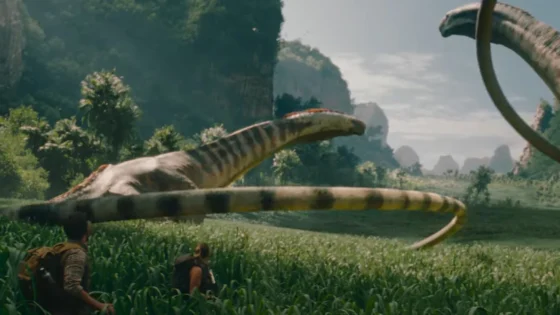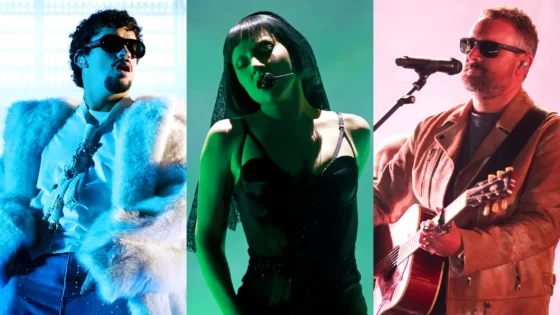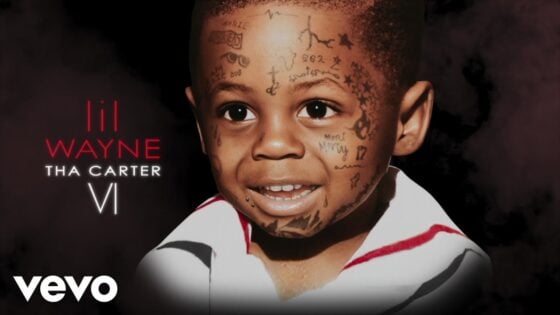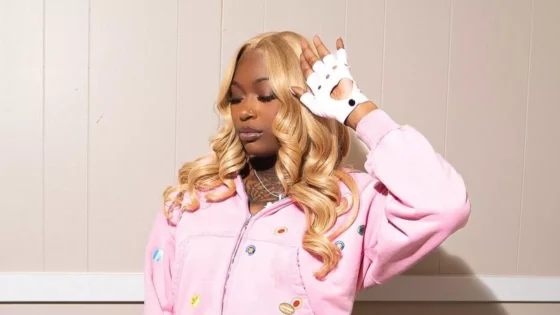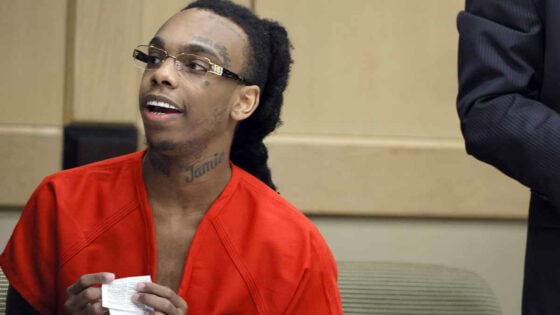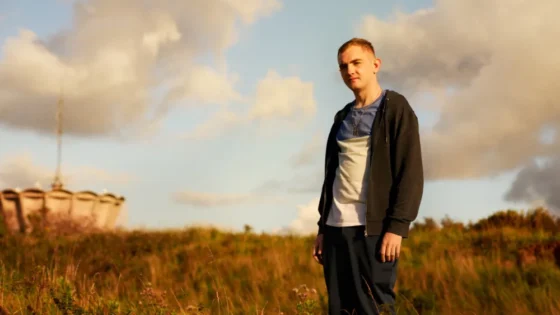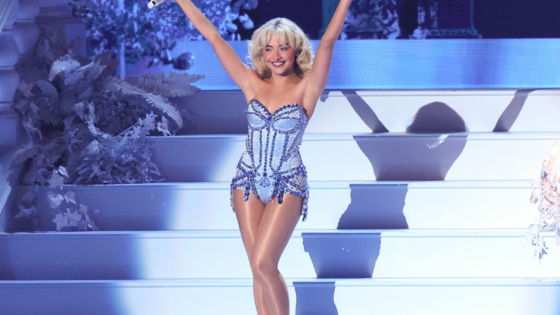Nary a pair of black gloves is seen throughout most of Luca Guadagnino’s Suspiria — that is, until late in the film, and then they’re used in a surprising fashion. The presence (or lack thereof) of black gloves might seem irrelevant (or a non sequitur), but fans of Dario Argento’s 1977 original will immediately take notice. Giallo, a primarily Italian horror subgenre, tends to feature mysterious slashers, often shown only through isolated shots of gleaming knives cradled by gloved hands. The original Suspiria isn’t technically Giallo — it features a supernatural antagonist rather than a deranged serial killer — but it takes the other stylistic hallmarks of the genre to their logical extremes. (And it does feature a gloved killer, if only briefly.) The seemingly inconsequential moment reveals Guadagnino’s reverence for both Argento’s masterpiece and Giallo films in general. He has made an epic horror film here, one that barely resembles the inspiration he’s paying homage to (he prefers to think of it as a “re-imagining”), yet hidden just below the surface is a clear affection for the original. Those who are slavishly devoted to Argento’s film may be turned off by this radical new interpretation, but Guadagnino’s Suspiria bristles with its own alluring energy.
The basic structure of 2018’s Suspiria matches the original. Susie Bannion (Dakota Johnson), an American, has arrived in Germany to attend a prestigious dance academy where pupils have been meeting grisly and mysterious ends. But it’s the specifics that make all the difference. This new version opens with a prologue in which a seemingly paranoid former student of the academy (played by Chloë Grace Moretz) visits a psychiatrist (the pseudonymous Lutz Ebersdorf). She claims the school is run by a coven of witches, though most of what she says is unintelligible.
The school’s witch connection is treated as a revelation in Argento’s Suspiria, but Guadagnino treats it as a given from the movie’s earliest moments. He’s less interested in the plot (which was barely there to begin with), and more interested in slowly unraveling the enigma of Susie Bannion. In Argento’s conception, Susie was a total blank; Jessica Harper (who also has a small role in the new version) rarely speaks throughout the film, a passive observer to monstrosities who only takes an active role at the film’s conclusion. Johnson’s version of the character is a Rubik’s cube that is solved bit by bit. We get numerous abstract flashbacks to her Mennonite childhood, her domineering and shaming mother, and her mother’s untimely death. Susie has no formal training (her family wouldn’t hear of such a thing), yet she’s been obsessed with dance her whole life. The film gradually — and quite elegantly — peels back the layers of her history.
Susie is enamored of — even obsessed with — the school’s lead instructor, Madame Blanc (Tilda Swinton), who also choreographs the company’s dances. Swinton, ever the chameleon, models her character after the Pina Bausch, a German choreographer and dancer who pioneered an extremely physical and relationship-based form of modern dance. She wears loose, flowing dresses that make her body look almost skeletal, and can be seen constantly holding a cigarette between her slender fingers, much like Bausch. Unlike the original film’s malevolent instructors, Swinton imbues Blanc with a strangely maternal energy; she shares the school’s nefarious plans for Susie, yet also has a barely concealed affection for her.
The school’s witch connection is treated as a revelation in Argento’s Suspiria, but Guadagnino treats it as a given from the movie’s earliest moments.
The 1977 Suspiria was technically set in Munich, but it was a place out of time. Most of the film was shot on set, and there’s no sense of the historical weight that the city brings to it. Argento isn’t particularly interested in the social implications of his films; instead, he’s a master of atmosphere. He shuts out the world around his characters so as to create a nightmare labyrinth of his own imagining. His film is dappled with kaleidoscopic colors — colors that make no sense in the context of the movie, but they’re beautiful and entrancing, and that’s all that matters.
Guadagnino isn’t as isolated as Argento is; he finds ways to center his stories in the world around us. In I Am Love (2009), a tale of romantic yearning is briefly suspended for a jargony explanation of a textile factory’s role in globalization, and A Bigger Splash (2015) intersperses a tense vacation with record production techniques. Suspiria veers into the fantastic, yet among Guadagnino’s films, it’s the most grounded in history. He has moved the location to divided Berlin; televisions and radios frequently give news updates on the violence being waged by and against the Red Army Faction, a left-wing terrorist group rebelling against post-war Germany’s conservative bent and the continued presence of former Nazis in positions of power. The dance academy in Suspiria is haunted by a coven of witches, and it’s no accident that the academy is now in Berlin. It’s a city haunted by its own evils — namely Nazism and Stalinism. Young, idealistic people hope to make something new, but older generations threaten to destroy everything.
Beyond the differences in its story, Suspiria looks nothing like Argento’s original (at least until its final scene). Guadagnino is too tethered to reality to indulge in the ecstatic colors that Argento favors; his film is mostly painted with grays and browns, though when colors do intrude they’re quite brilliant. It’s an appropriate choice for a film set in Berlin Autumn, a time and place famous for dreariness. Still, Guadagnino and cinematographer Sayombhu Mukdeeprom (who shot Call Me by Your Name) create their own kind of intriguing visuals. Bright colors aren’t requisite for a beautiful film, and the two wrangle stunning visuals out of seemingly dreary settings. Guadagnino’s fleet camera is often on the move; it soars across grand halls in elaborate shots that would make Alfred Hitchcock proud, but it also settles down whenever the film needs to enter a minor key. This version of Suspiria doesn’t have the stunning purples and pinks and greens of the original, yet it creates a new visual language that’s drastically different, but no less stunning.
For all its differences, this Suspiria shares one major connection with the original: its clunky screenplay. The screenwriter, David Kajganich, has previously collaborated with Guadagnino on A Bigger Splash, and created AMC’s excellent horror series, The Terror. None of his previous work betrays such a tin ear, yet it’s on full display in Suspiria. The saving grace is Johnson, who delivers Kajganich’s most awkward lines as if they were delicate puzzles to be pored over. She’s an actress who always seems to be a bit disconnected from what’s going on around her. In trash like the Fifty Shades films, she almost seems to be participating in a practical joke, but here her opacity is entrancing and electrifying. We want to know everything about her, and the film only delivers fleeting details, leaving us wanting more. Her version of Susie exists at a juncture between the more realistic performance of a fellow student (played excellently by Mia Goth) and the mystical stylings of Swinton. She often speaks as if in a dream, but rather than creating a distance between the audience, it makes us lean closer.
Suspiria, at 152 minutes, is as luxuriant as a mink coat. It’s a kind of epic filmmaking that rarely graces horror films, which regardless of their ambitions, tend to be short and sweet. Luca Guadagnino is at the height of his powers, and his film is imbued with his own brand of magic. His Suspiria won’t replace Dario Argento’s original, which remains just as vital now as it was more than 40 years ago, but it’s a stunning counterpoint that desperately needs to be seen.






